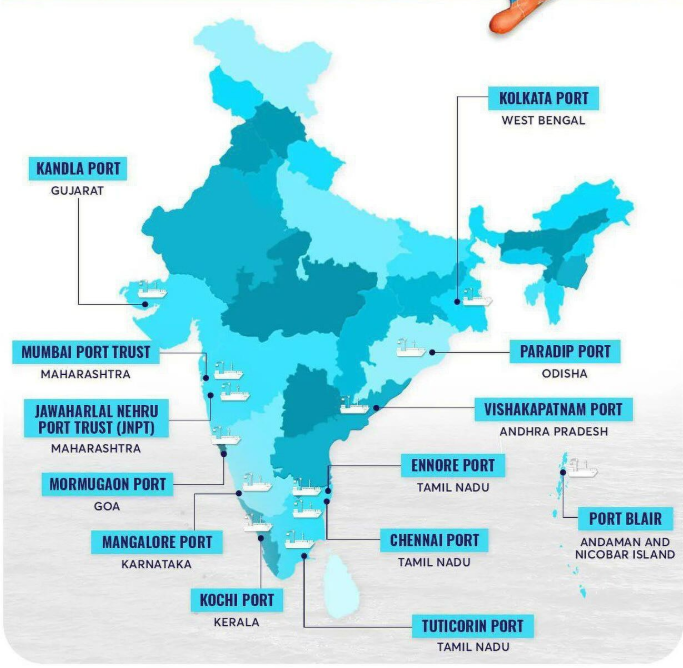
Source: The Economic Times
Context: In a significant move to advance the country’s shift towards clean energy, the Ministry of New and Renewable Energy (MNRE) has officially designated three key Indian ports—Deendayal (Gujarat), V.O. Chidambaranar (Tamil Nadu), and Paradip (Odisha)—as Green Hydrogen Hubs. This initiative falls under the broader framework of the National Green Hydrogen Mission (NGHM).
Understanding Green Hydrogen Hubs
A Green Hydrogen Hub refers to a concentrated geographic area that co-locates the entire value chain for green hydrogen. This includes facilities for production, storage, distribution, and the end-use of green hydrogen and its derivatives, such as green ammonia and methanol.
- Primary Objective: The central aim is to establish self-sufficient regional ecosystems for hydrogen. This will help decarbonize industries where cutting emissions is challenging (like steel, cement, and maritime shipping) and position India as a global frontrunner in green hydrogen technology and export.
- Strategic Framework: The development of these hubs is a key component of the National Green Hydrogen Mission (NGHM).
Defining Characteristics of the Hubs
- Cluster-Based Development Approach: This model fosters the creation of “hydrogen valleys” tailored to specific regions, which combine renewable energy sources, industrial consumption, and logistics networks to enhance efficiency and reduce costs.
- Unified Infrastructure: The hubs will integrate production plants, storage solutions, and transportation systems (including pipelines and port facilities) to ensure a smooth and reliable hydrogen supply chain.
- Focus on Innovation: The initiative promotes technological advancements, supports pilot projects, and encourages public-private collaborations to improve the efficiency of hydrogen production.
- Export-Led Strategy: The coastal location of these hubs is strategically chosen to serve as gateways for exporting green hydrogen and ammonia to the international market.
- Enabling Policy Support: The hubs are guided by schemes like the Hydrogen Valley Innovation Clusters (HVIC) and are bolstered by fiscal incentives, grants for infrastructure development, and funding for research and development.
The Three Designated Port Hubs
- Deendayal Port Authority (Gujarat): Positioned on the western coast, it will act as a strategic focal point for a hydrogen value chain geared towards exports.
- V.O. Chidambaranar Port Authority (Tamil Nadu): This southern hub will synergize with local renewable energy resources and industrial clusters.
- Paradip Port Authority (Odisha): Located on the eastern seaboard, this hub will primarily focus on supplying hydrogen to local industries and decarbonizing coastal shipping activities.
